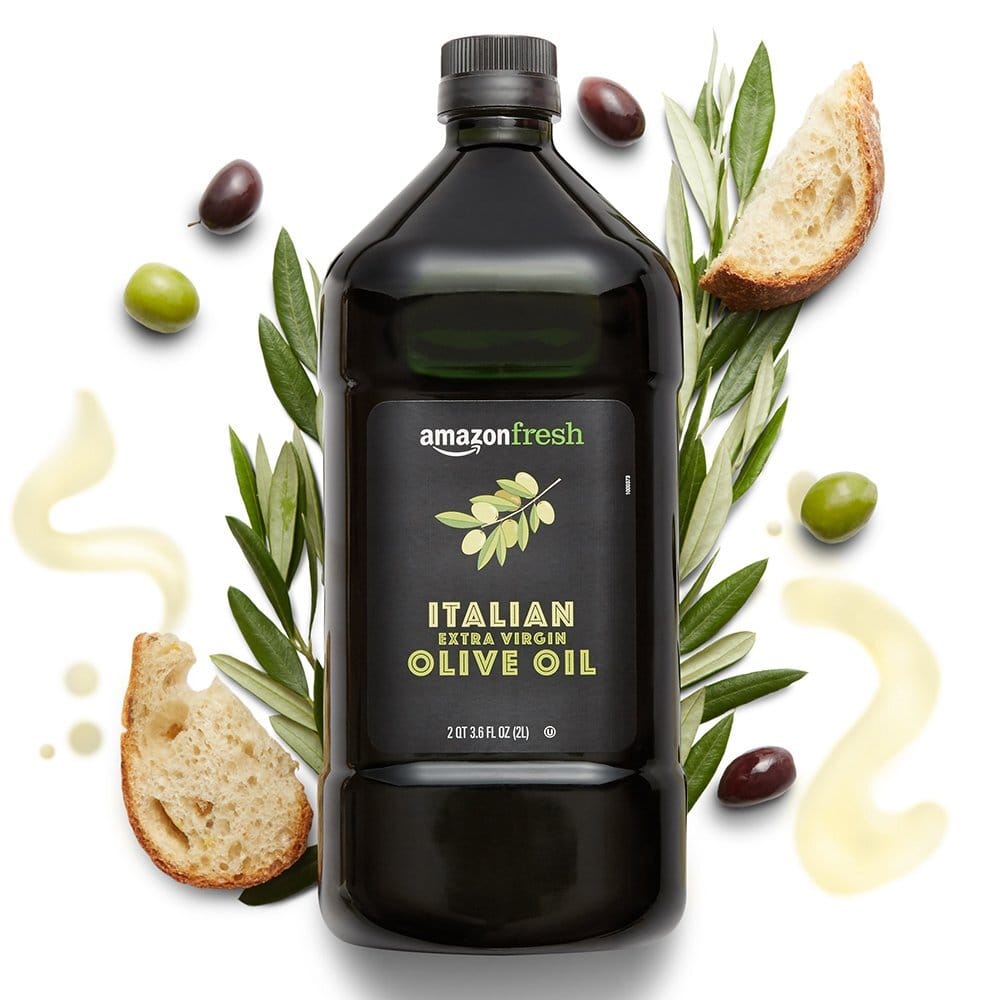- The Homestead Movement
- Posts
- The No-Stress Way to Cook from Scratch 🥣 + How to Never Feel Disrespected Again 💥
The No-Stress Way to Cook from Scratch 🥣 + How to Never Feel Disrespected Again 💥
Question of the day: Which one homestead staple would you never give up?
NOTICE: Formerly known as The Steady Homestead, we’ve rebranded to The Homestead Movement! Same great content, just a fresh new name. 😊

QUOTE OF THE DAY
"Growing food is like printing your own money."
— Ron Finley
HOMESTEAD TIP OF THE DAY
If your early tomatoes or squash are developing sunken black spots on the bottom, you’re likely dealing with blossom end rot. This is usually caused by irregular watering or calcium imbalance, not a disease. Avoid it by watering deeply and consistently. Don’t let soil dry out completely between waterings. Mulch well to maintain moisture and avoid sudden fluctuations. Adding crushed eggshells or gypsum can help long-term, but consistent watering is key.
IN TODAY'S EDITION
Homestead Tip 🌱
Poll Results From Last Thursday 📊
All Things Homestead: How to Start Cooking from Scratch Without Getting Overwhelmed 🥣
Personal Development: How Homesteaders Handle Disrespect 🧍♀️
Today's Top Picks 🛍️
Let’s Keep It Reel 🤣
BROUGHT TO YOU BY
🏡 Feeling Like You’ll Never Be Fully Self-Sufficient?
I used to think I needed a ton of land, a big budget, or decades of experience to live off the land. Turns out, I just needed a better guide.
When I first started homesteading, I wasted so much time on YouTube videos and blog posts that contradicted each other. I wanted clear answers. I wanted someone to just show me what works.
That’s why I love The Self-Sufficient Backyard.
Written by a couple who’s been living completely off-grid for more than 40 years, this book is packed with real, practical how-to’s.
Inside you’ll find:
How to grow food year-round (even on 1/4 acre)
How to collect & purify your own water
Build solar power, root cellars, & DIY food systems
And how to make your land actually work for you
👉 Grab your copy here and take one step closer to the freedom you're craving.
POLL RESULTS FROM LAST THURSDAY
How many tabs do you have open for “homestead plans”?
🟨🟨🟨🟨⬜️⬜️ One dream spreadsheet
🟩🟩🟩🟩🟩🟩 3 Pinterest boards and a notebook
🟨🟨🟨🟨⬜️⬜️ 12 tabs I’ll never revisit
🟩🟩🟩🟩🟩🟩 My brain IS the tabs
🟨🟨🟨🟨⬜️⬜️ Zero! I just wing it
via @beehiiv polls
Feel free to participate in fun polls in our next newsletters! 😉
Also, follow us on our social media accounts for daily homesteading inspiration and updates.
ALL THINGS HOMESTEAD
How to Start Cooking from Scratch Without Getting Overwhelmed 🥣
In reality, cooking from scratch can feel like a mountain when you’re used to quick fixes or boxed meals. And if you're running a homestead, managing kids, or trying to stretch a tight grocery budget, it can all feel like too much.
But here's the truth: scratch cooking is not about fancy recipes or picture-perfect meals. It’s about using what you have, keeping it simple, and feeding your family in a way that saves money and builds real skills.
If you’re just starting out, here’s a beginner’s guide that breaks it all down.
What Does “Cooking from Scratch” Actually Mean?
It means using whole ingredients instead of pre-made ones. So instead of boxed mac & cheese, you make a pot of noodles and stir in milk, butter, and cheese.
It’s baking bread instead of buying it, simmering soup instead of opening a can, or whisking your own salad dressing.
Start with What You Know (and Eat Often)
Pick 3–5 meals your family already loves. Things like tacos, spaghetti, pancakes, or soups.
Then find basic, from-scratch versions of those meals. For example:
Instead of jarred sauce, cook crushed tomatoes with onion and garlic.
Replace boxed pancake mix with flour, baking powder, milk, and eggs.
Don’t reinvent the whole meal plan. Just adjust one recipe at a time.
Stock a Basic Pantry (It Makes Cooking Easier)
You don’t need a pantry packed wall to wall. Just keep a few helpful staples on hand:
Flour, sugar, salt, and baking powder
Rice, pasta, dried beans, or oats
Oil, vinegar, spices (start with garlic powder, paprika, and Italian herbs)
Broth, canned tomatoes, and canned beans
Butter, eggs, milk
With these basics, you can whip up dozens of simple meals and snacks.
Start Small… Scratch Cooking Isn’t All or Nothing
No one needs to bake fresh bread daily, make yogurt from raw milk, and cook everything over a fire. Start where you are.
Pick one thing. Maybe make a big pot of soup from scratch this week. Or try baking muffins without a box mix.
The key is to build confidence over time. Not burn out in a week.
Save Time by Prepping Ahead
Homesteading and homemaking don’t leave much free time. So make scratch cooking work with your schedule:
Chop veggies in the morning before chores.
Cook extra rice or beans and store them for later meals.
Use slow cookers or Dutch ovens so dinner can simmer while you work.
Cooking from scratch isn’t harder, it just needs planning.
Use What You Already Have
Scratch meals don’t need fancy ingredients. Look in your pantry or garden and ask, “What can I make with this?”
Got eggs? That’s breakfast, lunch, or dinner.
Extra potatoes? Mash them, fry them, or roast them.
Wilting greens? Add them to soups or scramble them with eggs.
Scratch cooking is creative. Use up what’s in your kitchen first.
Learn One Skill at a Time
One month, learn how to bake biscuits.
Another, try fermenting sauerkraut or making broth from bones.
Next, figure out how to make your own granola or tortillas.
You’ll be amazed how much you know after a few seasons of simple practice.
Don’t Forget the Clean-Up Strategy
Yes, scratch cooking makes more dishes. But with a few tricks, it’s manageable:
Clean as you go. Wipe counters and wash tools between steps.
Rinse pots right after use so food doesn’t harden.
Soak tough dishes during dinner so they’re easier to scrub later.
And if the kitchen’s messy? It just means good food was made.
You’ve got this, and your family will thank you for it. 💛
Daily News for Curious Minds
Be the smartest person in the room by reading 1440! Dive into 1440, where 4 million Americans find their daily, fact-based news fix. We navigate through 100+ sources to deliver a comprehensive roundup from every corner of the internet – politics, global events, business, and culture, all in a quick, 5-minute newsletter. It's completely free and devoid of bias or political influence, ensuring you get the facts straight. Subscribe to 1440 today.
PERSONAL DEVELOPMENT
How Homesteaders Handle Disrespect: 10 Calm, Confident Ways to Respond Without Losing Yourself 🧍♀️
Living close to the land doesn’t mean letting people walk all over you. Whether it’s a neighbor who crosses the line, a family member who gets too sharp, or someone online who thinks they can say anything… they all test your boundaries.
If you're tired of feeling caught off guard or unsure of how to speak up without making things worse, this guide is for you. These are 10 clear, confident ways homemakers and homesteaders can respond to disrespect.
1. Toss It Back with a Question
Instead of reacting fast, pause and ask: “What were you hoping to gain by saying that?”
This shifts the power back to you and puts the spotlight on their words, not your emotions.
2. Give Them the Death Stare
Sometimes, you don’t need words. Just hold eye contact, stay still, and let silence speak.
This one works well in person. No yelling. No sarcasm. Just a stare that says, “Try again.”
3. Play It Cool and Ask for Clarity
Say something like, “Sorry, can you repeat that? I want to be sure I heard you right.”
This lets them know you’re aware, alert, and not about to let anything slide under the rug.
4. Draw the Line
Keep it simple and direct: “Talk to me like that again, and I’m gone.”
You’re not arguing. You’re choosing peace over disrespect. This works with kids, coworkers, and even in-laws.
5. Put It on Pause
If things get heated, respond with: “Hit me up when you’re ready to talk respectfully.”
You’re not avoiding the issue. You’re setting a boundary, and sticking to it.
6. Lay Down the Law
This is for when someone really crosses the line. Say: “Let’s get one thing straight. That’s not okay. Don’t ever speak to me like that again.”
Say it once. Say it firm. Then walk away or change the subject.
7. Kill Them with Kindness
If nothing else works, or if you’re too tired to waste energy, try this:
Smile, say “Thank you,” and move on. Sometimes, grace can do more than any comeback.
8. Flip the Script
Turn the moment around by asking: “Would you be okay if someone said that to you?”
This makes the other person think. It shifts them from offense to reflection, and you stay in control.
9. Set the Vibe Upfront
Let folks know your standard: “I don’t do disrespect. Let’s keep this respectful or not at all.”
This one is great for repeat situations: family dinners, group chats, or online threads.
10. Exit with Power
End the moment with, “This convo’s over until you come correct.”
It’s not rude, it’s firm. You’re done until they’re ready to bring better energy.
Why This Matters for Homemakers and Homesteaders
Out here, we’re raising kids, growing food, caring for others, and holding down a home.
We don’t have extra time to argue or absorb someone else’s bad behavior.
Disrespect, especially from folks who don’t understand our lifestyle, can show up in subtle ways. Comments like “You’re just a stay-at-home mom,” or “Must be nice to play farmer all day,” are not just rude, they're draining.
This isn’t about clapping back. It’s about protecting your peace. And you can do that without yelling, without guilt, and without letting people treat you like less.
You’ve got land to tend and little hearts to raise. Don’t waste your energy on small-minded disrespect. 💪🏽
THE STEADY HOME’S GIGGLE CHAMBER
What’s the most dangerous thing on the homestead in June? An unlocked gate and an ambitious goat.

LET’S KEEP IT REEL!
I've put together some fantastic farm videos that are sure to make you laugh. Take a look and enjoy the fun!
It's like my ears suddenly go extra when I hear stuff like this 😂👂
I absolutely live for dad jokes like this one 😂
Proof that even jokes can't handle a joke! 😄


